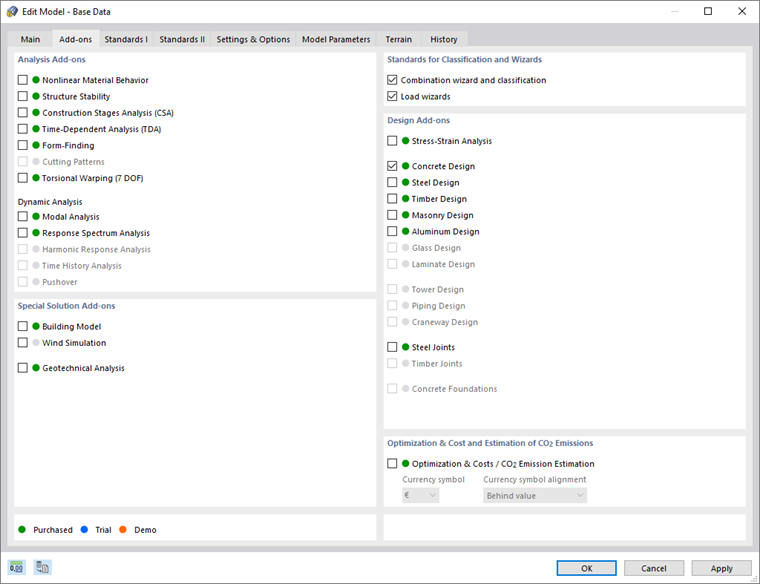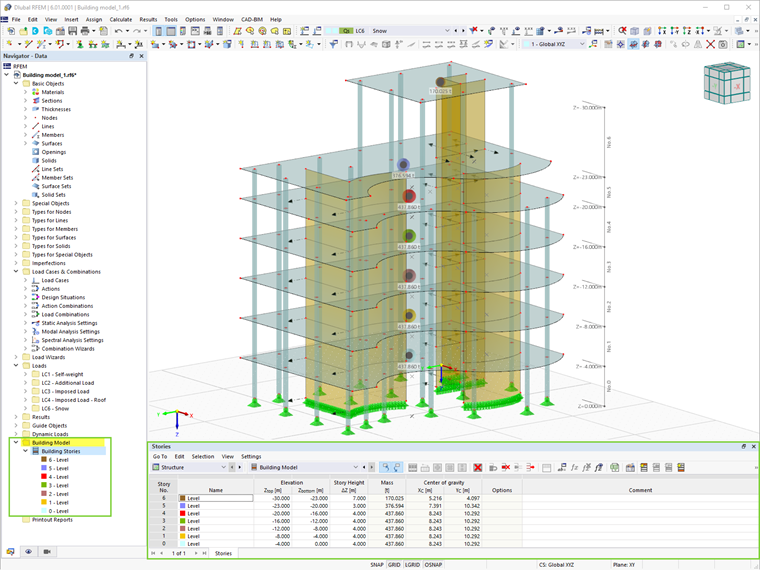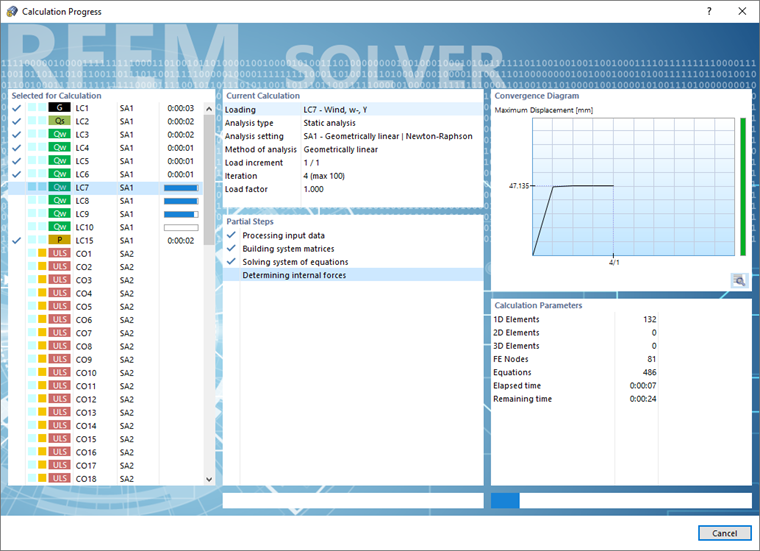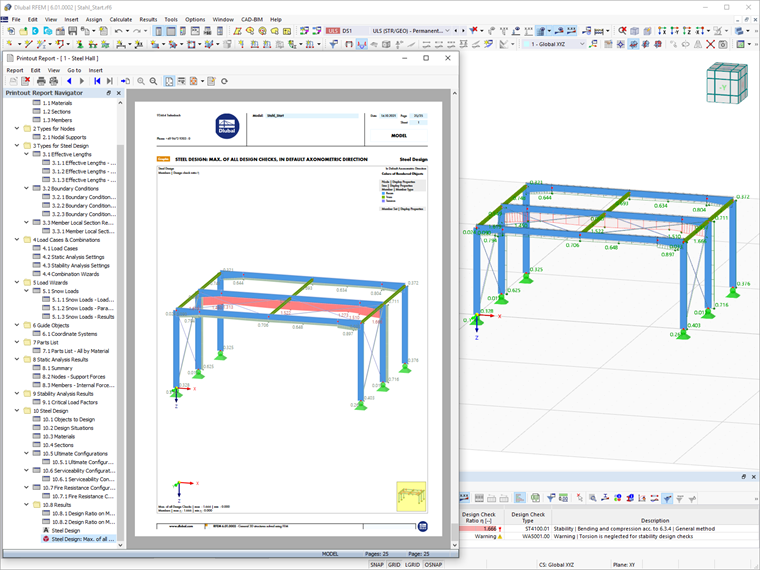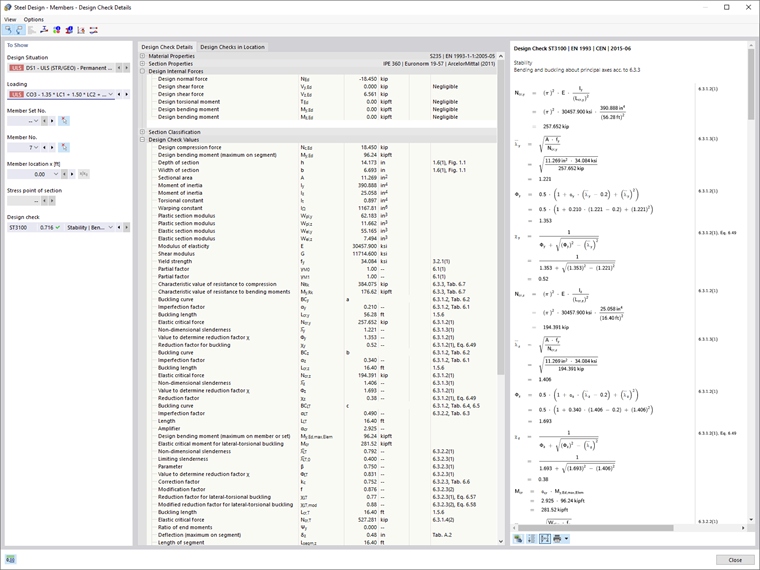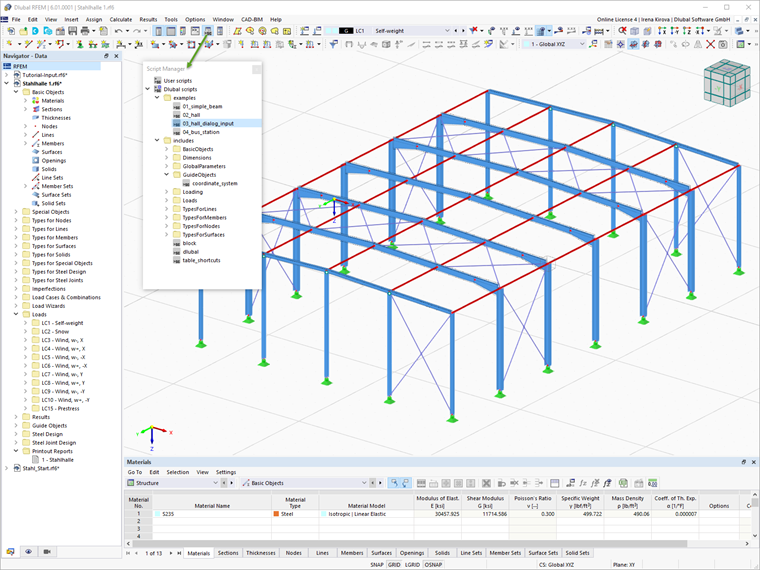Integration of All Add-ons in RFEM Environment
In contrast to RFEM 5 (where individual add-on modules must be initialized separately), all add-ons are integrated in the environment of RFEM 6, where they are centrally managed. This integration allows interactive use of the individual program parts, thus providing users with the opportunity to create a program package tailored to their specific needs.
New Add-ons
RFEM 6 offers new add-on modules improving modeling and design. For instance, the Building Model add-on allows for defining and modifying building stories in a simple and straightforward manner. In a similar way, the separate Masonry Design add-on available in RFEM 6 advances the design of masonry structures with respect to RFEM 5, where the structural behavior of masonry must be captured by the RF-MAT NL add-on module.
Further new add-ons in RFEM 6 are the Optimization and Costs/CO₂ Emission Estimation and the Time-Dependent Analysis (TDA). The former can be used to find suitable parameters for compliance with the optimization criteria and to estimate costs or CO₂ emissions. The latter allows time-dependent material behavior to be considered in RFEM 6.
Faster Calculation with Multi-Core Processor Technology
Several solvers, or more precisely, one per core, are started in parallel for models where many load combinations must be calculated. Given that each solver calculates a load combination, the utilization of the cores and the calculation itself are enhanced to a great extent.
More Powerful Printout Report
The printout report in RFEM 6 has been remarkably optimized. Parallel work in the program and the report is possible due to the non-modal printout environment. The user can select, filter, copy, and manage the data to be exported as well as interactively modify chapters and create user-defined ones.
PDF files, formulas, 3D graphics, and so on can also be imported into the printout report. Graphical printouts can easily be adjusted. For example, pictures can be exported in 3D in the PDF format of the report.
Output of Design Formulas
One of the novelties in RFEM 6 is the output of design check formulas. Once the results in terms of design are available, the design check formulas can be displayed in detail. These formulas can be included in the printout report. In addition to the verification formulas used, a reference to the associated equation in the standard is provided.
Script Manager
The script manager in RFEM 6 can be used to control all input elements using JavaScript. This can be done via the console or saved scripts.
